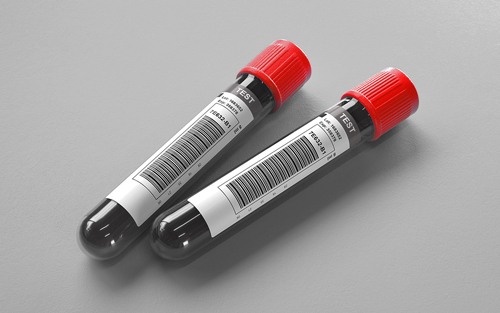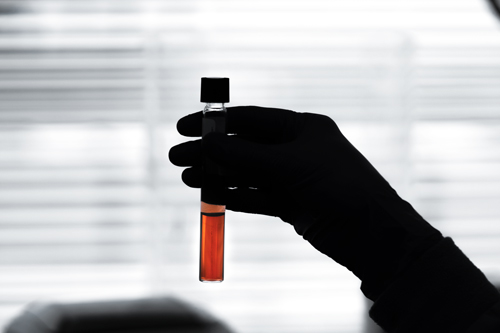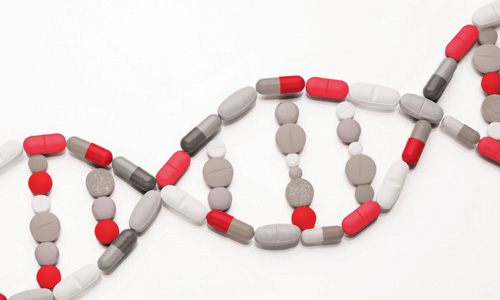Lead, Industrial, Whole Blood
Ordering Recommendation
Recommended for the assessment of industrial lead exposure in adults and provides exposure guidance in accordance with OSHA regulations. To assess lead exposure in a non-occupational setting, Lead, Whole Blood (Venous) (0020098) is preferred.
New York DOH Approval Status
Specimen Required
Collect from patient aged 16 years or older.
Royal blue(K2EDTA), Royal blue (NaHep) or tan (K2EDTA).
Transport 3 or 6 mL whole blood (royal blue) (Min: 0.5 mL) OR Transport 3 mL whole blood (tan) (Min: 0.5 mL)
Refrigerated.
Serum. Specimens collected in tubes other than Royal blue(K2EDTA), Royal blue (NaHep), or tan (K2EDTA). Hemolyzed or clotted specimens.
Ambient: 30 hours; Refrigerated: 5 weeks; Frozen: Unacceptable
Methodology
Quantitative Inductively Coupled Plasma-Mass Spectrometry (ICP-MS)/Hematofluorometry
Performed
Sun-Sat
Reported
1-5 days
Reference Interval
| Test Number |
Components |
Reference Interval |
|---|---|---|
| Lead, Industrial, Whole Blood | Less than or equal to 3.4 µg/dL | |
| Zinc Protoporphyrin (ZPP), Whole Blood | 0-40 µg/dL | |
| Zinc Protoporphyrin (ZPP) WholeBld Ratio | 0-69 µmol ZPP/mol heme |
Interpretive Data
Interpretive Data
Reference intervals are based on the CDC's Blood Lead Reference Value (BLRV). Thresholds and time intervals for retesting, medical evaluation, and response vary by state and regulatory body. Contact your State Department of Health and/or applicable regulatory agency for specific guidance on medical management recommendations. Actions described by OSHA in 1978 and finalized in 1983 are shown below.
Elevated results may be due to skin- or collection-related contamination, including the use of tubes that are not certified to be trace element free. If an elevated result is suspected to be due to contamination, confirmation with a second specimen collected in a certified trace element-free tube is recommended.
Methodology: Inductively Coupled Plasma-Mass Spectrometry (ICP-MS).
| "Occupational Safety and Health Standards: Lead (1983). 29 CFR Part 1910.1025 App C" Action required for workers with Elevated Lead Values OSHA, Occupational Exposure to Lead, 1978 |
||
|---|---|---|
| No. of Tests | Lead | Action Required |
| 1 | Greater than equal to 40.0 µg/dL | Notification of worker in writing; medical examination of worker and consultation. |
| 3 (average) | Greater than or equal to 50.0 µg/dL | Removal of worker from job with potential lead exposure. |
| 1 | Greater than or equal to 60.0 µg/dL | Removal of worker from job with potential lead exposure. |
| 2 | Less than 40.0 µg/dL | Reinstatement of worker in job with potential lead exposure is based upon symptoms and medical evaluation. |
| OSHA requirements in effect since 1978 call for the measurement of whole blood lead and zinc protoporphyrins (ZPP) (NCCLS document C42-A, Nov. 1996) to evaluate the occupational exposure to lead. OSHA requires ZPP whole blood testing to be reported in units of µg/dL. For adults, conversion of ZPP units of µg/dL whole blood assumes a hematocrit of 45 percent. Conversion factor: µmol/mol heme x 0.584= µg/dL. | ||
Laboratory Developed Test (LDT)
Note
Hotline History
Hotline History
CPT Codes
83655; 84202
Components
| Component Test Code* | Component Chart Name | LOINC |
|---|---|---|
| 0020606 | Zinc Protoporphyrin (ZPP) WholeBld Ratio | 29763-0 |
| 0020613 | Zinc Protoporphyrin (ZPP), Whole Blood | 2895-1 |
| 0025015 | Lead, Industrial, Whole Blood | 77307-7 |
Aliases
- Blood Lead Test
- BLL
- Lead, blood
- Blood Lead Level
- Lead
- Pb
- Lead Exposure
















